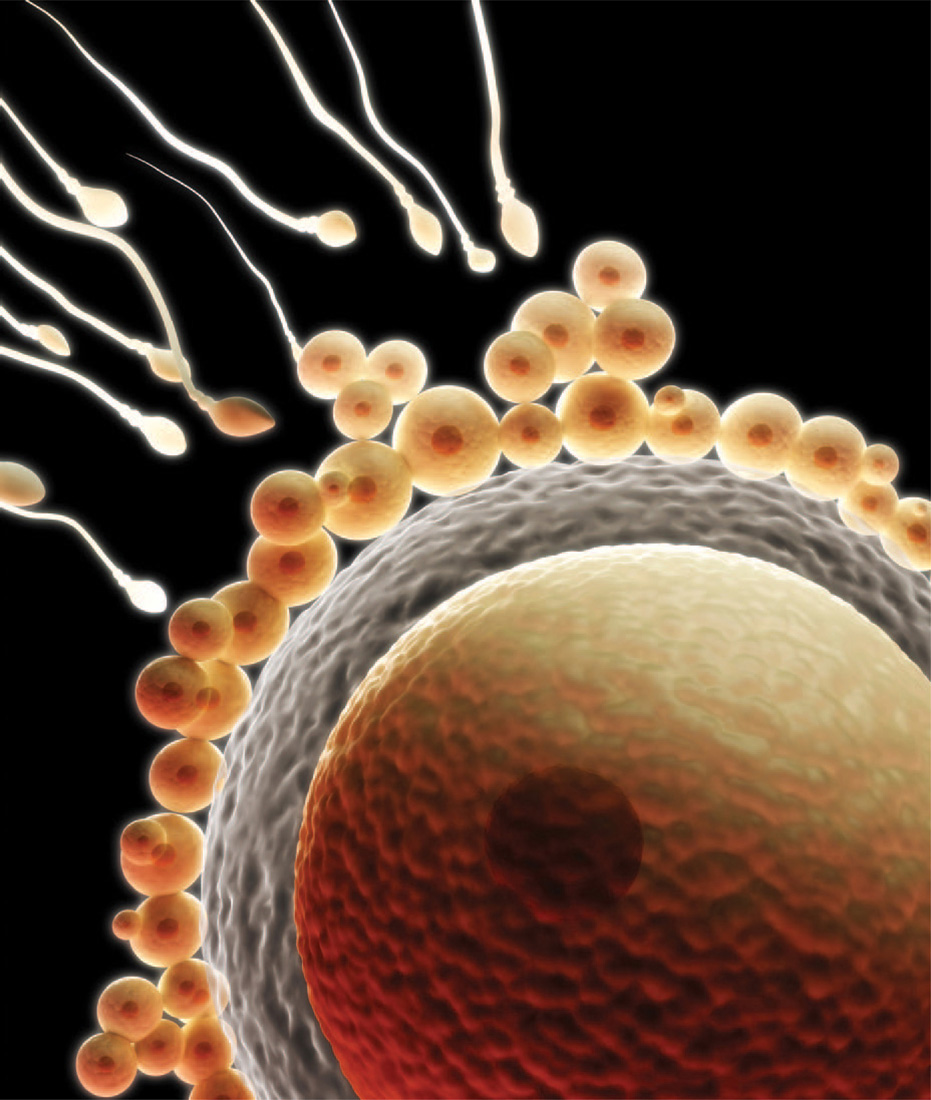CHAPTER 42 INTRODUCTION
42-1
CORE CONCEPTS
42.1 Reproduction is a fundamental feature of living organisms and occurs asexually and sexually.
42.2 The movement of vertebrates from water to land involved changes in reproductive strategies, including internal fertilization and the amniotic egg.
42.3 The male reproductive system is adapted for the production and delivery of sperm, and the female reproductive system is adapted for the production of eggs and, in many cases, support of the developing fetus.
42.4 Human reproduction involves the formation of gametes, fertilization, and growth and development.

Children are sometimes gently introduced to the subject of human reproduction by referring to “the birds and the bees.” Since birds and bees reproduce, it is assumed that they can substitute for humans in discussions about reproduction. But how relevant is bird and bee reproduction to human reproduction? It might come as a surprise that most male birds don’t have penises, and that male bees don’t even have fathers. Perhaps, then, the lesson of the “birds and the bees” is not so much in what it teaches us about human reproduction, but, as we explore in this chapter, in showing us that reproductive strategies among organisms are spectacularly diverse.
Reproduction is a striking and conspicuous feature of the natural world. Flowers burst into bloom each spring to attract pollinators, male fireflies light up brilliantly on warm summer nights as they signal to females in the grass below, birds sing and display ornate plumage to attract mates. Most living organisms have the ability to reproduce—that is, to make new organisms like themselves. This remarkable ability is not unique to living organisms—after all, computer viruses and self-replicating molecules are capable of reproduction but are not themselves living. However, reproduction is a key attribute of life. All living things came about by reproduction, and most are capable in turn of reproduction. Of course, this statement does not address the question of how life originated in the first place, a topic considered in Case 1: The First Cell.
This chapter focuses on reproduction and development. We begin by considering reproduction broadly across the living world, then turn our attention to animal, and specifically vertebrate, reproduction and the surprise that even among vertebrates there is quite an array of reproductive strategies. In the last two sections, we focus on human reproduction, starting with reproductive anatomy and physiology and then following reproduction from gamete formation to fertilization, pregnancy, and birth.